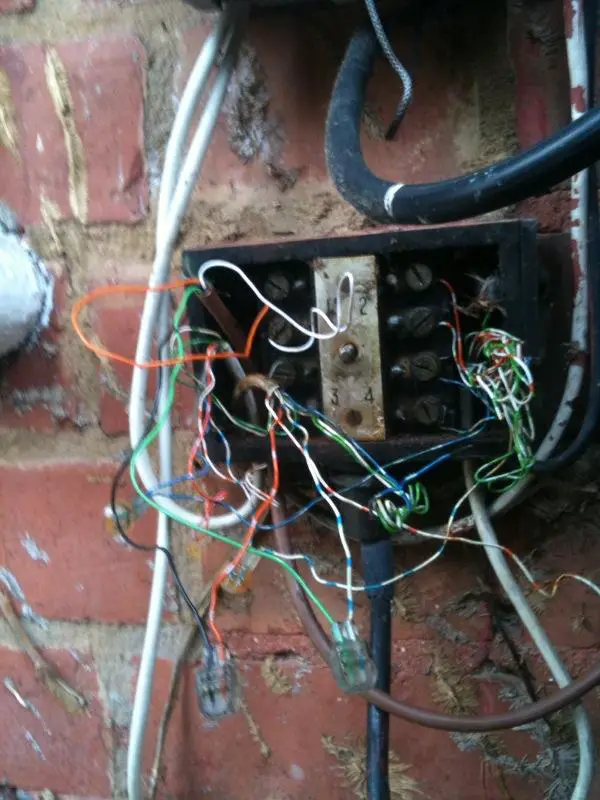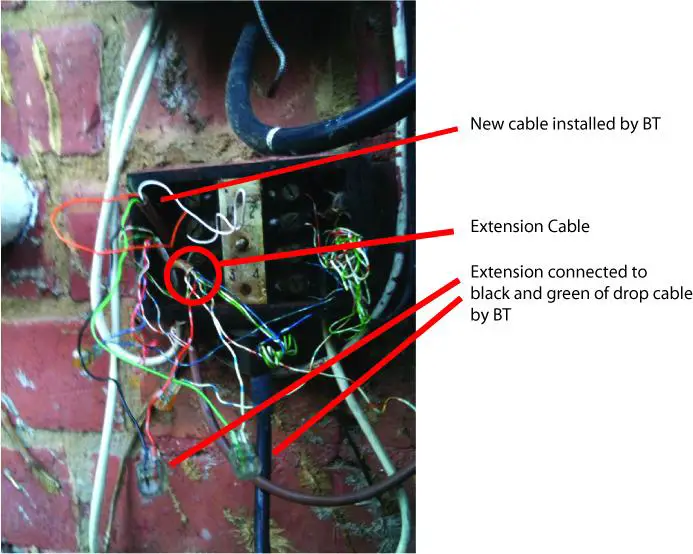BT chap came to fix a fault on the line.
When he left master socket worked but no extensions would.
I found that the extensions ran around the outside of the property to the btbox on the outside wall.
The new drop cable (Brown) as you can see from the photo has the orange connected to top left screw and the white to the screw directly below.
The BT chap connected the extension cable to the remaining two cables from the drop cable green to white blue and black to orange white.
As I understand it orange and white are the active pair (A and B)
So, would connecting to green and black to the extension ever work?
Also could someone please explain the numbering system on these boxes it looks like the top two screws on the left must be A and B but numbering is 1 -4 and they are 8 connections?
Thanks
Connecting the extension back to A and B all works fine.
Is it allowed to do this though, how should extension be wired in.
BT refused to come back as the master socket was working, they said the extensions were our problem
When he left master socket worked but no extensions would.
I found that the extensions ran around the outside of the property to the btbox on the outside wall.
The new drop cable (Brown) as you can see from the photo has the orange connected to top left screw and the white to the screw directly below.
The BT chap connected the extension cable to the remaining two cables from the drop cable green to white blue and black to orange white.
As I understand it orange and white are the active pair (A and B)
So, would connecting to green and black to the extension ever work?
Also could someone please explain the numbering system on these boxes it looks like the top two screws on the left must be A and B but numbering is 1 -4 and they are 8 connections?
Thanks
Connecting the extension back to A and B all works fine.
Is it allowed to do this though, how should extension be wired in.
BT refused to come back as the master socket was working, they said the extensions were our problem




